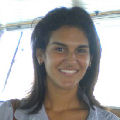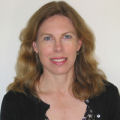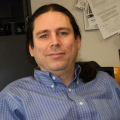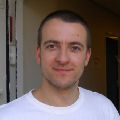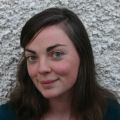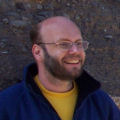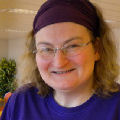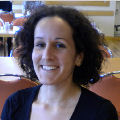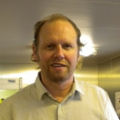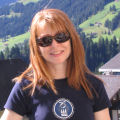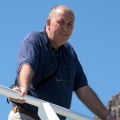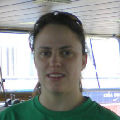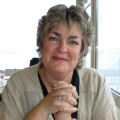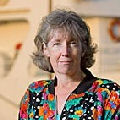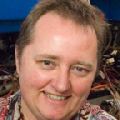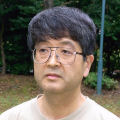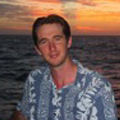Other scientists
|
|
Diva Amon: a marine biologist from Trinidad, the starting point of our expedition. Diva recently completed her undergraduate studies at the University of Southampton and hopes to begin a PhD in deep-sea biology this summer. |
|
|
Prof Nancy Grindlay: a marine geologist from the University of North Carolina, Wilmington, with a background in collecting, processing, and interpreting bathymetric, sonar, magnetic, and gravity data along submarine plate boundaries. |
|
|
Dr Nick Hayman: a structural geologist from the University of Texas, who uses geophysics and geochemistry to study faults in the Earth's crust. Nick hopes to study unusually large faults of the Cayman Trough to understand the fundamental behaviour of faults worldwide. |
|
|
Veit Huhnerbach: a marine scientist from NOCS, whose interests include sonar mapping of the seabed and the development of seafloor observatories to monitor habitats such as deep-water corals. Veit will be piloting the HyBIS remote vehicle with Bramley. |
|
|
Maria Judge: a geologist specialising in rock formations, Maria studied at the National University of Ireland, Galway, and has worked as a seismic interpreter, base metal explorationist, and for Ireland's Petroleum Affairs Division. |
|
|
Dr Tim Le Bas: a sonar geophysicist from NOCS, Tim is a specialist in processing sonar data and underwater images. Tim is handling the sidescan and multibeam sonar data and developing our Geographic Information System (GIS) database as the expedition progresses. |
|
|
Alexandra Meier: Alex recently started her PhD project at NOCS, as part of the Europe-wide SENSEnet programme developing sensors for marine environments. Alex will be testing materials for deep-sea sensors and analysing samples of microbes. |
|
|
Verity Nye: for her PhD project at NOCS, Verity is looking at how deep-sea vent animals reproduce and disperse, to understand their global pattern of life. Verity has previously worked in the Caribbean as a dive instructor, and as a benthic ecologist at the UK Centre for Environment, Fisheries and Aquaculture Science. |
|
|
Prof Rolf Pedersen: Director of the Centre for Geobiology at the University of Bergen, Norway, with a track record in studying the undersea volcanic ridges of the Arctic, including the discovery of the world's most northernmost deep-sea vents seen so far. |
|
|
Dr Carla Sands: a geochemist from NOCS, Carla studies the chemistry of the water dispersing from deep-sea vents, especially the fate of iron and other metals. Carla uses the CTD instrument to sample the deep water of the Cayman Trough, and analyses its dissolved methane, manganese and iron. |
|
|
Prof Roger Searle: Professor of Geophysics at Durham University, Roger has spent forty years studying mid-ocean ridges. He uses sonar, with gravity and magnetic data, to determine the volcanic and tectonic structures of ridges, and reveal the processes that create new oceanic crust around the world. |
|
|
Sarah Taws: a PhD student at the NOCS researching physical oceanography, Sara will be examining the deep ocean circulation of the Cayman Trough and how it may influence the biodiversity of the area. This is Sarah's first oceanographic research expedition. |
|
|
Sally Wilcox: Sally has held a wide range of senior positions in the Information, Communications and Technology (ICT) industry. Sally is leading the outreach programme from the ship, aiming to extend the ways that people can follow and share in the expedition. |
Colleagues ashore
|
|
Prof Cindy Van Dover: Director of Duke University Marine Lab, Cindy and her team will be working with us ashore to analyse the genetics of the marine life inhabiting the Cayman Trough. |
|
|
Prof Chris German: Chief Scientist of Woods Hole Oceanographic Institution's Deep Submergence team, Chris led the US expedition that found signs of deep-sea vents in the Cayman Trough in November 2009. |
|
|
Prof Koichi Nakamura: a geologist at the National Institute of Advanced Industrial Science and Technology in Tsukuba, Japan, Koichi has provided his Eh sensor for detecting deep-sea vents. |
|
|
Dr Adrian Glover: a marine biologist at the Natural History Museum in London, Adrian has provided whale bones which we will leave in the Cayman Trough to see what colonises them at extreme depths. |
Engineering team
|
Click here to meet members of the Underwater Systems Laboratory who designed and are operating the Autosub6000 vehicle during the expedition, and the Sea Systems engineering team who are running the CTD, TOBI and mooring operations. |
Latest news
Follow our daily updates from the ship,
as we explore the Cayman Trough
and hunt for deep-sea vents.
What are we doing right now?

